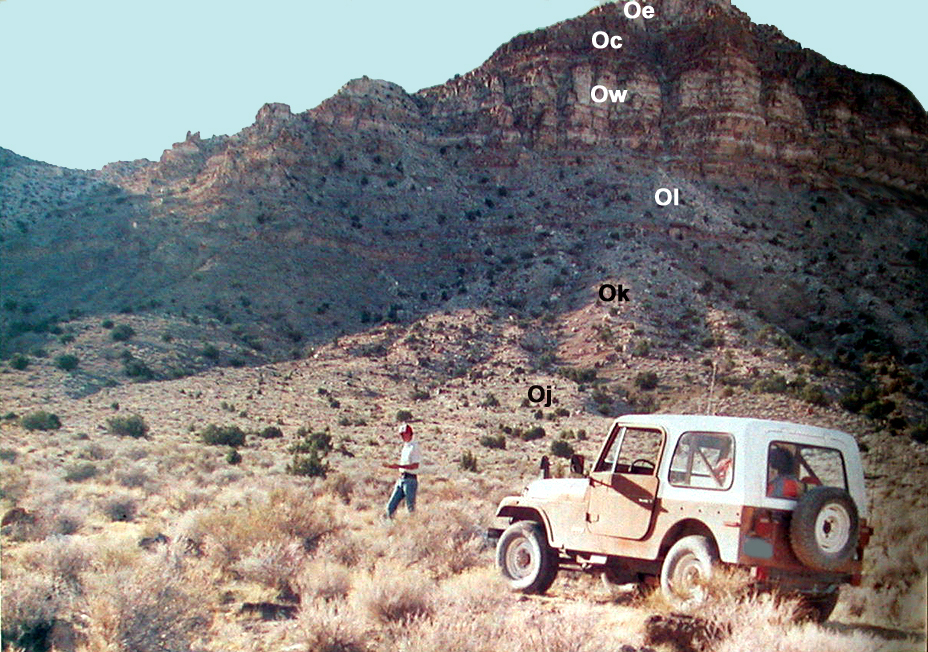
|
A seeker of Ordovician times explores the lower flanks of world-famous Fossil Mountain, Millard County, Utah. In the vast Great Basin Desert area immediately surrounding the paleontological protuberance occurs one of the great early Ordovician fossil-bearing rock sequences on the planet--a wildly fossiliferous accumulation of sedimentary material paleontologists and geologists alike call the Pogonip Group. This is a widespread association of six distinct rock formations roughly 485 to 470 million years old comprised of, in ascending order of geologic age (that is, oldest to youngest): the House Limestone; Fillmore Formation; Wah Wah Limestone; Juab Limestone; Kanosh Shale; and Lehman Limestone. Each Pogonip Group formational subunit yields unique suites of abundant invertebrate fossil specimens: trilobites, ostracods (bivalved crustacean), sponges, brachiopods, gastropods, pelecypods, cephalopods, graptolites, conodonts, echinoderms, corals, and bryozoans, primarily, that often form shell beds composed of nothing but a single variety of fossil organism; for example, the Kanosh Shale is justifiably famous for its thick shell beds containing the prolific remains of a single species of brachiopod, called scientifically Shoshonorthis michaelis. Other beds produce abundant ostracods, gastropods, trilobites, or echinoderms, to the exclusion of all of other invertebrate animal types. Fossil Mountain in Millard County, Utah, could well yield the most diverse lower Ordovician fossil sequence in North America. The visitor is standing atop the lower Ordovician Juab Limestone (marked by the symbol Oj, in black). In ascending stratigraphic order (oldest to youngest), the succeeding lower to middle Ordovician geologic rock formations exposed on Fossil Mountain include: lower Ordovician Kanosh Shale (Ok); late lower Ordovician Lehman Limestone (Ol); middle Ordovician Watson Ranch Quartzite (Ow); middle Ordovician Crystal Peak Dolomite (Oc); and capping Fossil Mountain is the middle Ordovician Eureka Quartzite (Oe). |
